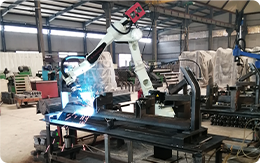 Afrikaans
Afrikaans  Albanian
Albanian  Amharic
Amharic  Arabic
Arabic  Armenian
Armenian  Azerbaijani
Azerbaijani  Basque
Basque  Belarusian
Belarusian  Bengali
Bengali  Bosnian
Bosnian  Bulgarian
Bulgarian  Catalan
Catalan  Cebuano
Cebuano  Corsican
Corsican  Croatian
Croatian  Czech
Czech  Danish
Danish  Dutch
Dutch  English
English  Esperanto
Esperanto  Estonian
Estonian  Finnish
Finnish  French
French  Frisian
Frisian  Galician
Galician  Georgian
Georgian  German
German  Greek
Greek  Gujarati
Gujarati  Haitian Creole
Haitian Creole  hausa
hausa  hawaiian
hawaiian  Hebrew
Hebrew  Hindi
Hindi  Miao
Miao  Hungarian
Hungarian  Icelandic
Icelandic  igbo
igbo  Indonesian
Indonesian  irish
irish  Italian
Italian  Japanese
Japanese  Javanese
Javanese  Kannada
Kannada  kazakh
kazakh  Khmer
Khmer  Rwandese
Rwandese  Korean
Korean  Kurdish
Kurdish  Kyrgyz
Kyrgyz  Lao
Lao  Latin
Latin  Latvian
Latvian  Lithuanian
Lithuanian  Luxembourgish
Luxembourgish  Macedonian
Macedonian  Malgashi
Malgashi  Malay
Malay  Malayalam
Malayalam  Maltese
Maltese  Maori
Maori  Marathi
Marathi  Mongolian
Mongolian  Myanmar
Myanmar  Nepali
Nepali  Norwegian
Norwegian  Norwegian
Norwegian  Occitan
Occitan  Pashto
Pashto  Persian
Persian  Polish
Polish  Portuguese
Portuguese  Punjabi
Punjabi  Romanian
Romanian  Russian
Russian  Samoan
Samoan  Scottish Gaelic
Scottish Gaelic  Serbian
Serbian  Sesotho
Sesotho  Shona
Shona  Sindhi
Sindhi  Sinhala
Sinhala  Slovak
Slovak  Slovenian
Slovenian  Somali
Somali  Spanish
Spanish  Sundanese
Sundanese  Swahili
Swahili  Swedish
Swedish  Tagalog
Tagalog  Tajik
Tajik  Tamil
Tamil  Tatar
Tatar  Telugu
Telugu  Thai
Thai  Turkish
Turkish  Turkmen
Turkmen  Ukrainian
Ukrainian  Urdu
Urdu  Uighur
Uighur  Uzbek
Uzbek  Vietnamese
Vietnamese  Welsh
Welsh  Bantu
Bantu  Yiddish
Yiddish  Yoruba
Yoruba  Zulu
Zulu conveyor component
The Importance of Conveyor Components in Modern Industries
In today’s fast-paced manufacturing and logistics environments, conveyor systems play a pivotal role in facilitating the efficient movement of goods and materials. These systems streamline processes, reduce manual labor, and enhance productivity. At the heart of these conveyor systems are various conveyor components, each contributing to the overall functioning and effectiveness of the system. Understanding the significance of these components can help businesses optimize their operations and make informed decisions about their conveyor systems.
Key Conveyor Components
1. Conveyor Belts The most recognizable component of a conveyor system, conveyor belts are available in various materials, including rubber, plastic, and metal. The choice of material depends on the application, as different materials provide unique benefits in terms of durability, flexibility, and resistance to chemicals or temperature. Ensuring the right type of belt is selected can greatly influence the system's efficiency and reliability.
2. Drives and Motors Conveyor drives are integral for powering the movement of the conveyor belt. They can be electric motors, hydraulic systems, or gear motors, depending on the application’s requirements. Choosing the right motor not only ensures that the conveyor operates smoothly but also affects energy consumption and maintenance needs. Modern drives are designed for energy efficiency, which can significantly lower operating costs.
3. Rollers and Pulleys Rollers support the conveyor belt and help it move smoothly. They are usually made from durable materials to withstand heavy loads and constant wear. Pulleys are used at each end of the conveyor; while one pulley drives the belt, the other acts as a tail pulley to maintain tension. The quality of rollers and pulleys affects the longevity and performance of the conveyor system, making it crucial to select high-quality components.
conveyor component

4. Idlers Idlers are critical for maintaining the tension of the conveyor belt. They help to support the belt and reduce friction, which can minimize wear and tear on both the belt and other components. Proper idler alignment and spacing can further enhance the performance and lifespan of the conveyor system.
5. Chassis and Frames The structure of a conveyor system is equally important. The chassis must be robust enough to bear the weight of the loads being transported while also remaining stable under various operating conditions. Materials such as steel and aluminum are commonly used for their strength and durability. A well-designed frame not only supports the system but also allows for easy maintenance and access to components.
6. Sensors and Controls In modern conveyor systems, sensors and control mechanisms are crucial for automation. These components help detect the load and adjust the speed or direction of the conveyor based on real-time data. With advancements in technology, conveyor systems can now be integrated with IoT solutions, allowing for remote monitoring and predictive maintenance, thus minimizing downtime.
Conclusion
Conveyor components are essential for the efficient operation of conveyor systems in various industries, from manufacturing to warehousing. By understanding the role and function of each component, businesses can make informed decisions about the design, implementation, and maintenance of their conveyor systems. Investing in high-quality conveyor components not only enhances operational efficiency but also reduces costs associated with repairs and downtime.
In an era where speed and efficiency are paramount, the significance of conveyor components cannot be overstated. As industries evolve and adapt to new technologies, the continued development and integration of advanced conveyor components will shape the future of logistics and manufacturing, ultimately leading to enhanced productivity and economic growth. Embracing these technologies and understanding their components will provide businesses with a competitive advantage in an increasingly automated world.
-
Revolutionizing Conveyor Reliability with Advanced Rubber Lagging PulleysNewsJul.22,2025
-
Powering Precision and Durability with Expert Manufacturers of Conveyor ComponentsNewsJul.22,2025
-
Optimizing Conveyor Systems with Advanced Conveyor AccessoriesNewsJul.22,2025
-
Maximize Conveyor Efficiency with Quality Conveyor Idler PulleysNewsJul.22,2025
-
Future-Proof Your Conveyor System with High-Performance Polyurethane RollerNewsJul.22,2025
-
Driving Efficiency Forward with Quality Idlers and RollersNewsJul.22,2025





























